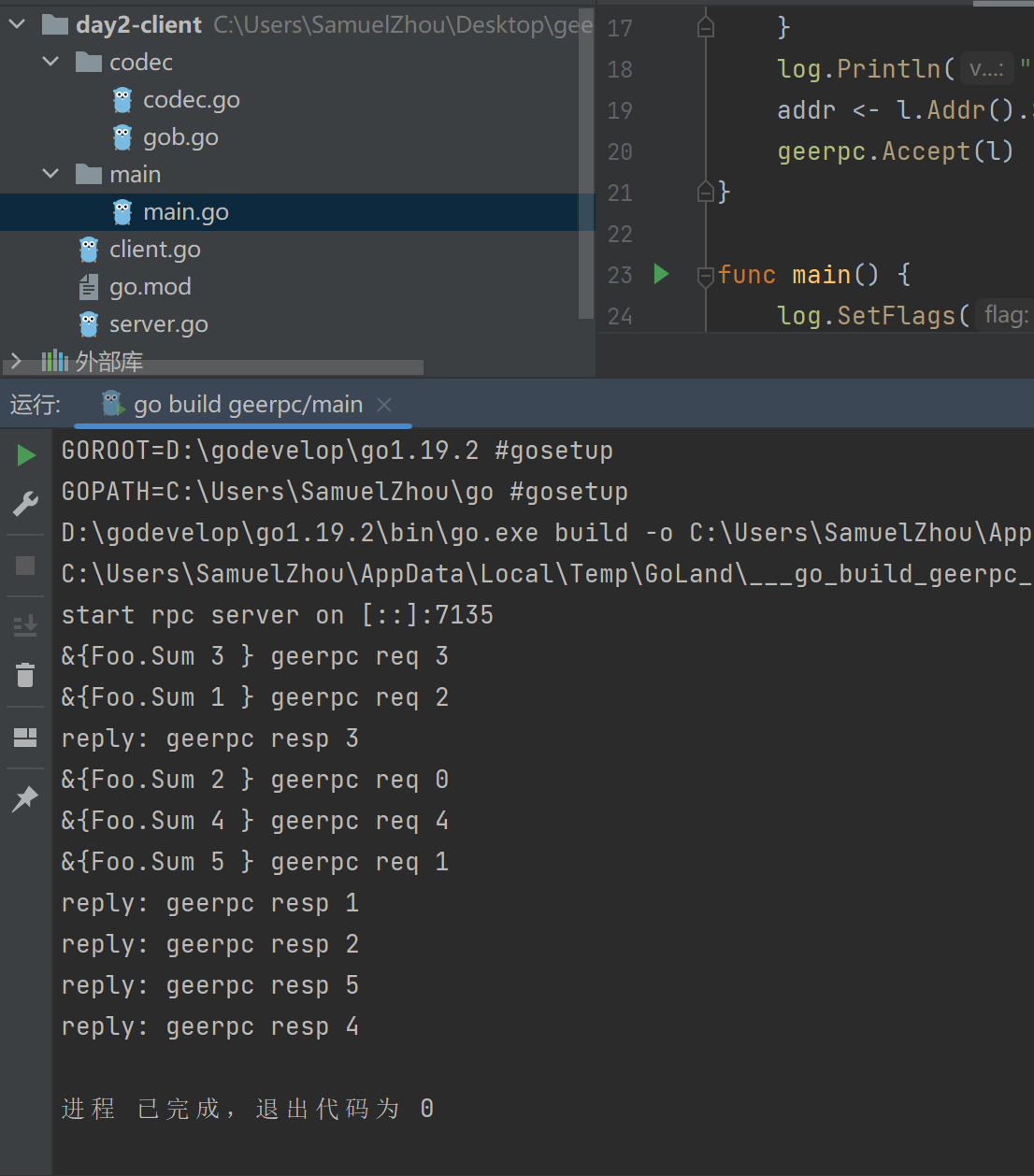1
2
3
4
5
6
7
8
9
10
11
12
13
14
15
16
17
18
19
20
21
22
23
24
25
26
27
28
29
30
31
32
33
34
35
36
37
38
39
40
41
42
43
44
45
46
47
48
49
50
51
52
53
| func (client *Client) send(call *Call) {
client.sending.Lock()
defer client.sending.Unlock()
seq, err := client.registerCall(call)
if err != nil {
call.Error = err
call.done()
return
}
client.header.ServiceMethod = call.ServiceMethod
client.header.Seq = seq
client.header.Error = ""
if err := client.cc.Write(&client.header, call.Args); err != nil {
call := client.removeCall(seq)
if call != nil {
call.Error = err
call.done()
}
}
}
func (client *Client) Go(serviceMethod string, args, reply interface{}, done chan *Call) *Call {
if done == nil {
done = make(chan *Call, 10)
} else if cap(done) == 0 {
log.Panic("rpc client: done channel is unbuffered")
}
call := &Call{
ServiceMethod: serviceMethod,
Args: args,
Reply: reply,
Done: done,
}
client.send(call)
return call
}
func (client *Client) Call(serviceMethod string, args, reply interface{}) error {
call := <-client.Go(serviceMethod, args, reply, make(chan *Call, 1)).Done
return call.Error
}
|
